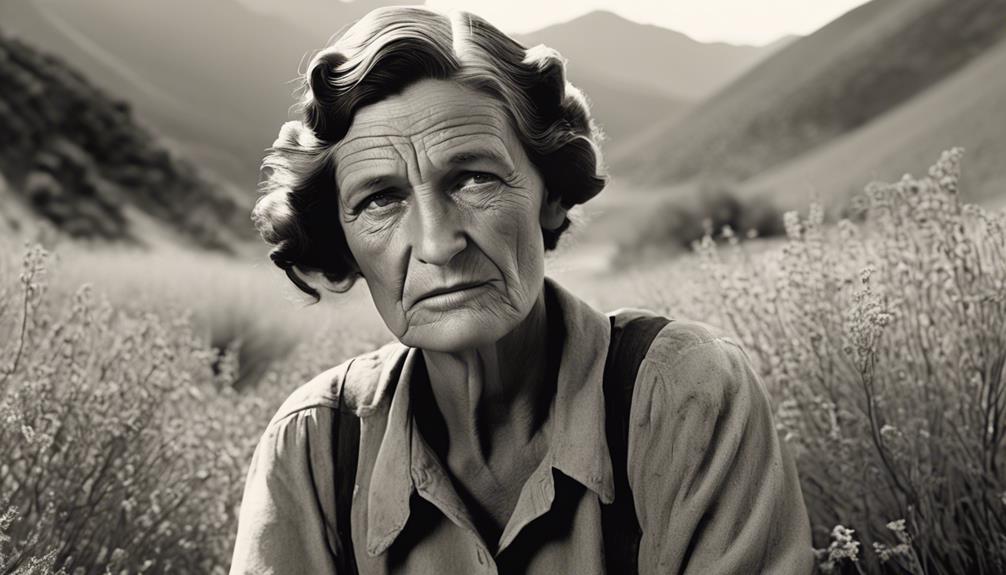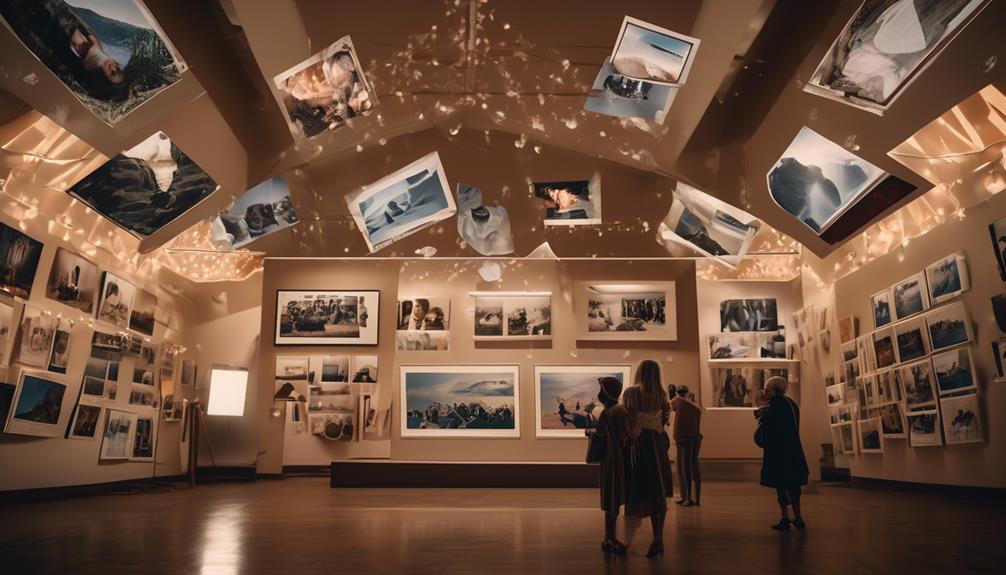Please note this post may contain affiliate links picked by me (Jay) that I have deemed may be of interest or relevant to you the reader of this.
These links do not affect the cost of the thing if you decide to purchase but i may get a little money if you choose to purchase.
For more information on my affiliate link policy click here.
As I stood in front of an art gallery, I couldn't help but be captivated by the vibrant images that adorned the walls. Each photograph seemed to tell a story, to capture a moment frozen in time. It was then that I realized the power of iconic photographers and their ability to inspire and evoke emotions through their work.
Curious to uncover their secrets, I embarked on a journey to understand the three steps that can help us glean inspiration from these masters of the craft. From studying their techniques to emulating their lighting and mood, there is much to learn from these iconic photographers.
But why stop there? Join me as we explore how to interpret subject matter and incorporate our personal style, unlocking a world of endless inspiration.
Key Takeaways
- Analyzing the artistic styles of iconic photographers can provide valuable insights into composition, lighting, and subject matter.
- Understanding and applying composition techniques such as color theory and the rule of thirds can enhance the visual impact and storytelling of photographs.
- Emulating lighting techniques used by iconic photographers can add depth, mood, and emotion to your own photos.
- Interpreting subject matter in unique and meaningful ways, using symbolism and experimentation, can create compelling and thought-provoking photographs.
Study the Masters
Studying the masters of photography is an exhilarating journey into the minds and techniques of the visionaries who've shaped the art form. To truly understand the essence of photography and unlock your own creative potential, it's essential to analyze the artistic styles of these iconic photographers and delve into their visual storytelling techniques.
When we study the masters, we expose ourselves to a wealth of inspiration and innovation. Each photographer has a unique style that sets them apart, and by analyzing their work, we can gain valuable insights into composition, lighting, and subject matter. From Ansel Adams' breathtaking landscapes to Diane Arbus' captivating portraits, every master photographer has something to teach us.
Understanding visual storytelling is another important aspect of studying the masters. Photography is more than just capturing a moment; it's about conveying a story or emotion through a single image. By examining how the masters used different techniques such as framing, perspective, and timing, we can learn how to effectively communicate our own stories through our photographs.
Analyze Composition Techniques
By closely examining the composition techniques employed by master photographers, we can unlock the secrets to creating visually stunning and impactful images. These techniques not only help us understand how to arrange the elements within a frame but also guide us in capturing the essence of our subjects.
One important aspect to consider is color theory. Understanding how colors interact and complement each other can greatly enhance the overall composition of a photograph. Whether it's using complementary colors to create contrast or utilizing monochromatic tones to convey a certain mood, color plays a crucial role in storytelling through photography.
Another composition technique to analyze is the rule of thirds. This principle suggests dividing the frame into nine equal parts using two horizontal and two vertical lines. By placing the main subject or points of interest along these lines or at their intersections, we can create a sense of balance and visual harmony. The rule of thirds encourages us to break away from the instinctive urge to center our subjects, resulting in more dynamic and engaging compositions.
Emulate Lighting and Mood
Now let's explore how we can capture the perfect lighting and mood in our photographs by drawing inspiration from the techniques used by iconic photographers.
One way to achieve this is to experiment with shadows. Shadows can add depth and dimension to your photos, creating a sense of mystery and intrigue. Try positioning your subject in such a way that the light creates interesting shadows, or use props and objects to cast shadows onto your subject. This can create a dramatic effect that captures the viewer's attention.
Another important aspect of capturing the perfect lighting and mood is to focus on capturing emotions. Emotions are what make a photograph come alive and connect with the viewer on a deeper level. Pay attention to the expressions and body language of your subjects, and try to capture those fleeting moments of raw emotion. Whether it's joy, sadness, love, or excitement, these emotions can bring your photographs to life and make them more impactful.
In order to emulate the lighting and mood of iconic photographers, it's important to study their work and understand their techniques. Look at how they use lighting to create a specific mood or atmosphere in their photographs. Pay attention to the direction of the light, the intensity, and the color temperature. Experiment with different lighting setups and techniques to see how they can enhance the mood of your photos.
Interpret Subject Matter
To truly capture the essence of a subject in your photographs, it's essential to delve deep into their story and find unique ways to interpret their presence. It's not just about pointing your camera at something and clicking the shutter; it's about understanding the subject on a deeper level and finding ways to convey that understanding through your images.
One way to interpret subject matter is through symbolic representation. Look for objects or elements that can serve as symbols for the subject's story or personality. For example, if you're photographing a musician, you could incorporate musical instruments or sheet music in the composition to represent their passion and talent.
Another approach is artistic interpretation. Think outside the box and experiment with different angles, perspectives, and techniques to capture the subject in a way that's visually interesting and unique. Try playing with light and shadow, using unconventional framing, or experimenting with long exposures to create a sense of movement or emotion.
Interpreting subject matter is about going beyond the surface and finding creative ways to convey the essence of your subject. It's about telling a story through your photographs and inviting viewers to connect with the subject on a deeper level. So, take the time to understand and interpret your subject, and let your images speak volumes.
Incorporate Personal Style
Incorporating personal style into your photography allows you to infuse your unique perspective and creative vision into every image you capture. It's all about developing your individuality as a photographer and finding inspiration in your own distinct way.
Here are five ways to incorporate your personal style and make your photos truly stand out:
- Experiment with different techniques: Don't be afraid to try new things and push the boundaries of traditional photography. Play with lighting, angles, and composition to create images that reflect your personal aesthetic.
- Embrace your favorite subjects: Whether it's landscapes, portraits, or still life, focus on the subjects that truly inspire you. By shooting what you love, you'll naturally infuse your personal style into your work.
- Use colors to express emotions: Colors have the power to evoke emotions and set the mood of your photographs. Experiment with different color palettes to convey the feelings and atmosphere you want to capture.
- Pay attention to details: Incorporate your personal style by focusing on the small details that others might overlook. Whether it's a unique texture or a subtle gesture, capturing these moments will add depth and interest to your photos.
- Tell a story: Use your photos to tell a narrative that reflects your personal experiences, passions, and perspectives. By weaving a story through your images, you'll create a body of work that's truly your own.
Frequently Asked Questions
What Are Some Recommended Resources or Books to Further Delve Into the Study of Iconic Photographers?
When it comes to studying iconic photographers, there are some recommended resources and books that can take your understanding to the next level. These go beyond just analyzing photographs and delve into techniques like lighting setups and equipment recommendations.
They also help in interpreting subject matter and developing your own personal style. So, if you're looking for inspiration and want to push the boundaries of your photography, these resources and books are definitely worth exploring.
How Can I Improve My Understanding of Composition Techniques Beyond Just Analyzing Photographs?
To truly grasp composition techniques, it takes more than just dissecting photos. It's like discovering hidden treasures in a vast landscape.
Expand your understanding by experimenting with different angles, lighting, and perspectives. Take your own shots and analyze how each element contributes to the overall composition.
Push the boundaries, challenge the norms, and let your creativity soar.
Embrace the art of composition and watch your photography evolve into something truly remarkable.
Are There Any Specific Lighting Setups or Equipment Recommendations That Can Help Me Emulate the Lighting and Mood of Iconic Photographs?
Are there any specific lighting setups or equipment recommendations that can help me emulate the lighting and mood of iconic photographs?
Absolutely! Lighting techniques play a crucial role in capturing the mood and atmosphere of a photograph. By studying iconic photographers, you can learn their lighting setups and techniques.
Experiment with different lighting angles, diffusers, and reflectors to achieve the desired effect. Investing in quality equipment, such as a versatile lighting kit and modifiers, will also enhance your ability to replicate the lighting of iconic photographs.
Get ready to create stunning and evocative images!
Can You Provide Examples of How Subject Matter Can Be Interpreted Differently by Different Photographers?
Different interpretations and creative perspectives are what make photography such a dynamic and captivating art form. The way photographers approach and capture a subject can vary greatly, resulting in unique and thought-provoking images.
From capturing the raw emotion of a moment to exploring abstract concepts through symbolism, each photographer brings their own vision and voice to their work.
This diversity in interpretation allows us to see the world through fresh eyes and inspires us to push the boundaries of our own creativity.
How Can I Develop My Own Personal Style While Still Incorporating the Techniques Learned From Iconic Photographers?
Developing my own personal style while incorporating techniques learned from iconic photographers is an exciting journey of self-discovery. By experimenting with different techniques, I can find what resonates with me and what sets my work apart.
It's important to stay true to my unique vision while still learning and incorporating new ideas. By blending the tried-and-true techniques of iconic photographers with my own innovative approach, I can create a style that's truly my own, pushing the boundaries of what's possible in photography.
Conclusion
After studying the masters, analyzing composition techniques, and emulating lighting and mood, I've discovered a world of inspiration in iconic photographers. Their unique perspectives and artistic choices have ignited a fire within me to push the boundaries of my own photography.
By interpreting subject matter and incorporating my personal style, I'm ready to embark on a journey of creativity and self-expression. So, grab your camera and join me in capturing the extraordinary moments that lie ahead!
Let's paint the world with our lens and make memories that will last a lifetime.

